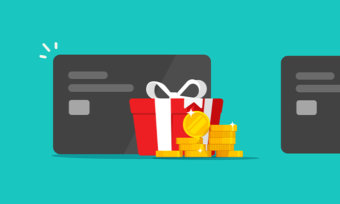
Rewards Credit Cards - June 3rd
KEY POINTS: Air New Zealand has 12 lounges in NZ, four across Australia and one each in Nadi and Rarotonga, plus offers access to many more Star Alliance partner lounges across Australia, Asia and America. You…
– Read more
Banking & Insurance - September 23rd
Congratulations to TSB, the winner of Canstar’s award for Most Satisfied Customers | Credit Cards for the second year in a row. A credit card is a great financial tool. If used wisely it can help smooth…
– Read more
Banking & Insurance - August 12th
Congratulations to American Express, the winner of Canstar’s award for Most Satisfied Customers | Rewards Credit Cards. How do you like your credit card rewards? Across credit cards, the rewards on offer break down into two…
– Read moreRewards credit cards give you bonuses that you earn according to how much money you spend on your credit card. The credit card provider converts your spending into points, then into rewards when you redeem those points.
There are four main types of rewards, discussed in detail further below:
Depending on the credit card and rewards program you choose, you can earn rewards points for each dollar you spend on the card.
You are then able to use (redeem) these points in various ways, according to the rules of the rewards scheme, such as exchanging them for a selected range of goods and services, or for discounts on such things as flights and accommodation.
Check whether the card caps (limits) the amount of rewards points you can earn, whether the rewards points can expire before you redeem them, and whether it’s easy to redeem the points for the rewards you value.
There are four main types of rewards credit cards:
To compare rewards credit cards, consider the following questions:
Canstar can also help narrow down your options. You can use the table at the top of the page to compare rewards credit cards, and change the filters to suit your requirements. Canstar researches and rates credit cards from a range of providers. When comparing rewards credit cards we consider both the price and features on offer, including the net reward return that customers can get.
Some potential benefits of having a rewards credit card are:
Some of the drawbacks of having a rewards credit card are:
Most everyday purchases will be eligible purchases. But there are certain transactions that won’t be eligible, as determined by the credit card provider. Common exclusions include interest, fees and charges, cash advances, balance transfers, government-related charges and gambling-related purchases.
The exact process will depend on your credit card provider. But generally, you can redeem your credit card rewards points by logging into your account, going to the rewards section and following the prompts.
Cashback rewards are often paid automatically into the card holder’s account annually.
Whether or not rewards credit cards are worth it depends on how you use your credit card. Rewards credit cards typically charge higher annual fees and interest rates than non-rewards cards. So before applying for one, you should make sure that the rewards you earn are worth enough to justify this higher cost.
If you use your credit card a lot and pay off your balance each month, it may be worthwhile. But if you do carry a balance on your card, you’ll likely spend more in interest than you will gain in rewards.
Looking for an award-winning credit card product or to switch providers or brands? Canstar rates products based on price and features in our Credit Card Star Ratings and Awards. Our expert Research team shares insights about which products offer 5-Star value and which providers offer outstanding value overall.
Canstar rates a range of financial products, covering banking, insurance and investment. We also reveal which providers have the most satisfied customers in our dedicated Customer Satisfaction Awards.
Rewards cards can potentially charge a much higher interest rate than low-rate, no frills cards.
So, if you don’t spend a lot on your card or you find you can’t pay it off in full each month, a rewards card might just be an incentive to spend more than you can afford! On the other hand, if you do spend a lot and pay it off every month, you could do quite well out of the right rewards card.
Common credit card fees are the standard payments you can expect to pay with any of the credit cards you choose. These fees include:
Please note that these are a general explanation of the meaning of terms used in relation to credit card rewards. Your bank or financial institution may use different terms, and you should read the terms and conditions of your credit card carefully to understand all rewards, features, fees and charges, and interest rates that may apply to your card.
Annual fee / annualised fee: charged for administration of your line of credit. Annual fees vary – some credit cards don’t charge an annual fee, while the American Express Platinum Card has an annual fee of a substantial $1250.
Automatic transfer: A system where a bill is paid by one bank automatically transferring money into an account when the bill comes due. Also known as direct debit.
Auto-redemption: A system you can set up with your provider where every time you reach a certain number of points, they are automatically redeemed in the method of your choice.
Average daily balance: The average daily balance of your card is determined by adding up all balances during the month and dividing the total sum by the number of days in the month. With most lenders, the annual interest rate is then applied to that “daily” amount.
Balance transfer: Transferring the outstanding balance of one credit card to another card, usually one with a better (lower) rate.
Balance transfer fee: A fee charged when you make a balance transfer. It may be a flat fee or a percentage of the amount you transfer.
Bankruptcy: This is when someone’s debt problems become so serious that they are unable to pay their existing debts and bills. They can apply to a court to be declared bankrupt, and any assets or savings they have can be used to pay off their debts. They can then wait a certain time period to have that bankruptcy removed from their record, or apply for it to be removed earlier.
Big spender: Credit card users who spend a lot on their cards every month and always pay off the full balance. Rewards credit cards are useful for these cardholders because they spend enough to earn a significant amount of rewards points.
Cash advance: Withdrawing cash from a line of credit. Usually incurs a cash advance fee and/or a higher interest rate.
Cash advance fee: A fee charged when you use your credit card to get cash out from an ATM, buy foreign currency, buy travelers cheques, or pay a gambling debt. The fee can be a flat dollar amount or a percentage of the amount withdrawn.
Caveat emptor: Latin for “let the buyer beware”. In financial situations, this phrase means that a buyer should be careful to examine a product?s terms and conditions, before signing up for the product.
Credit limit: The maximum amount you can spend using your credit card before having to pay off some of the balance.
Credit report or credit history: A report from a credit agency that contains a history of your payments on current and previous credit cards and loans. Banks and other lenders use your credit report to decide how likely you are to repay a future debt and whether or not to lend money to you.
Credit rating or credit score: A numerical score that represents your credit-worthiness, based on your credit repayment history. The score is based on whether you pay your bills on time, your current level of debt, the types of credit and loans you have, and the length of your credit history. Your credit rating and credit report are used by banks and lenders when deciding whether or not to lend money to you.
Debit card: Also known as a bank card or a cheque card. Allows you to access the money in your savings or checking account to make purchases, and requires that you enter your PIN number.
Default: When a cardholder fails to make the minimum required payment on their credit card bill, loan, or other line of credit. Defaults are a serious black mark on your credit report and negatively affect your credit rating.
EFT: Electronic Funds Transfer. The electronic transfer of money between accounts by ATMs, home computers and EFTPOS machines.
EFTPOS: Electronic Funds Transfer at Point Of Sale. Usually refers to a small machine that merchants use to receive payments from a customer’s credit card, debit card or gift card.
Everyday spender: Credit card users who use their credit cards for everyday purchases and pay off their balances each month.
Full balance: The entire amount owing on your card that month, including any purchases made during the month, any amounts unpaid from previous bills, and any interest or fees charged.
Habitual spender: Credit card users who keep a revolving debt on their credit card and don’t manage to pay it off each month.
Interchange fee: A fee charged by your bank for a merchant’s bank to process a payment via your credit card.
Interest rate: The rate at which your outstanding balance increases per month if your bill is not paid in full.
Interest-free days: The number of days you have to pay your bill in full before interest is charged on the outstanding balance. It is the period of time between the date of a purchase and when the payment is due.
Introductory rate: An initial interest rate offered to entice new cardholders to sign up for a credit card. These rates usually begin low but revert to the standard rates after six months or so.
Merchant: Someone who sells goods or services to customers for payment.
Minimum interest charge: The minimum amount of interest you would be charged if you are charged any interest. For example, if your total interest charge is $0.75 but the bank’s minimum interest charge is $1.00, you will be charged $1.00.
Minimum payment: The number listed on your bill as the minimum your bank requires you to pay off your credit card balance for that month.
Occasional spender: Credit card users who only spend in splurges or on impulse (holidays, emergencies) and then spend months paying the balance off.
Ombudsman: If you have a dispute with your bank and haven’t been able to resolve it through their internal complaint resolution process, you can contact the Insurance and Financial Services Ombudsman in New Zealand on 0800 888 202. It is a free and independent service that resolves disputes with banks and other financial institutions.
Overdraft fee: An overdraft occurs when you make any type of payment without having that amount of money in your account. The bank will extend credit up to a maximum amount, the overdraft limit. Interest is charged daily on the balance of your overdraft amount.
Over-limit fee: A penalty fee charged to you for exceeding the credit limit on your credit card.
Penalty fees: Fees charged if you violate the terms of your cardholder contract. Over-limit fees are an example of a penalty fee.
Pre-approval: An initial notification that a customer is likely to be approved for a certain credit limit if they apply for that type of credit card. This is based on the bank’s information about their credit history as opposed to their official credit report, so it does not guarantee the customer will actually be approved if they apply.
RBNZ cash rate: The overnight interest rate that the Reserve Bank of New Zealand offers financial institutions to settle-up on inter-bank transactions.
Revolving account: An account where repayments are not fixed to a certain number of payments of a certain amount, and the account stays open even if the full balance is not paid off every month. Credit cards are the most common type of revolving account.
Rewards: Benefits that come from using a rewards credit card, in proportion to the amount of money spent. Rewards come in four main types: cash back, frequent flyer miles, merchandise (shopping vouchers), and instant or general rewards.
Switching: Changing from one product to another with the same financial institution, e.g. switching from a rewards credit card to a savings account with a debit card attached.
Universal default: Where one financial institution treats a borrower as if they had defaulted with them because the borrower defaulted with a different institution.
Read the Methodology document in our star ratings report to find out how we rate credit card providers.
Who offers credit cards in New Zealand?